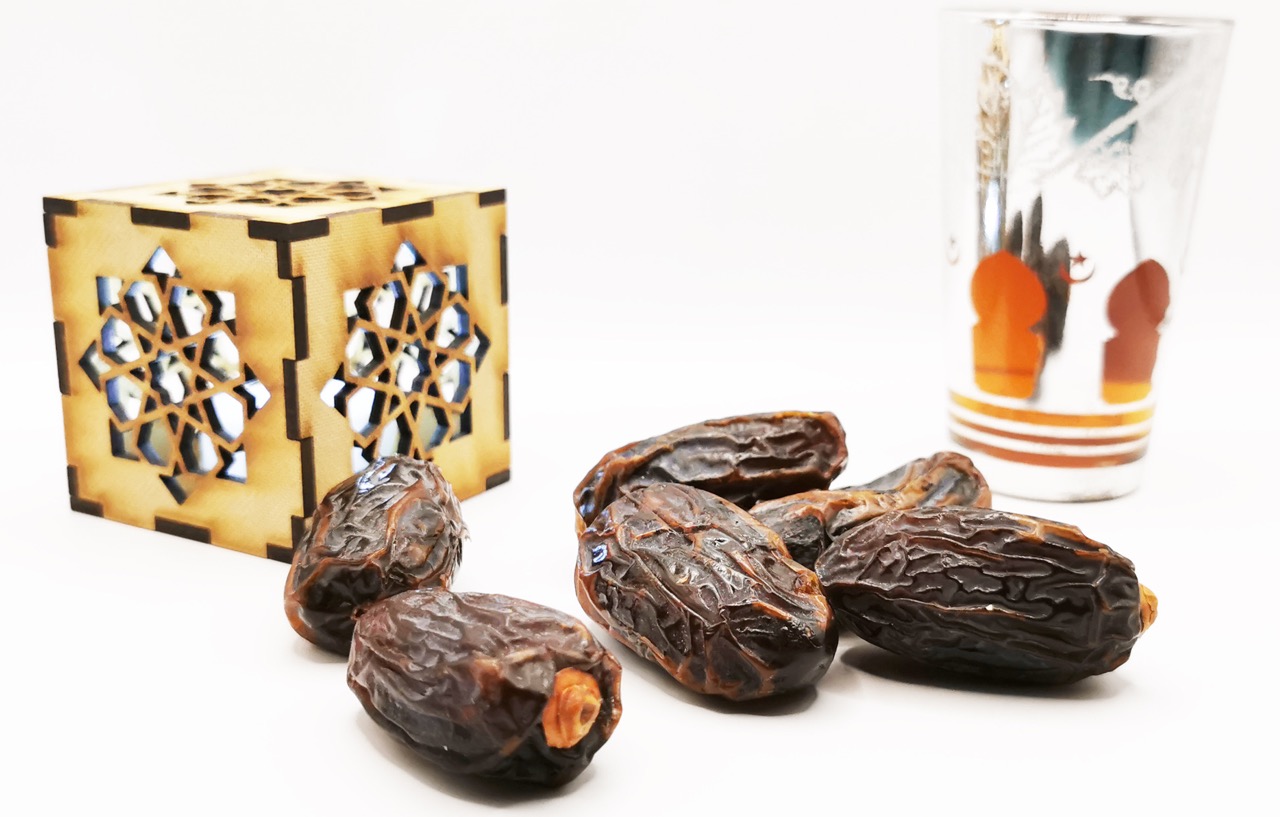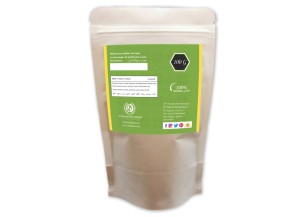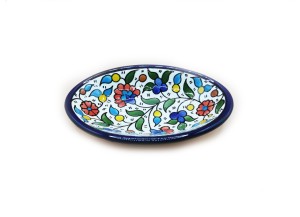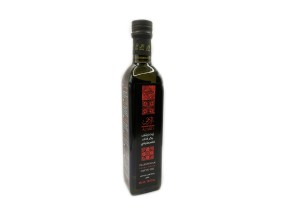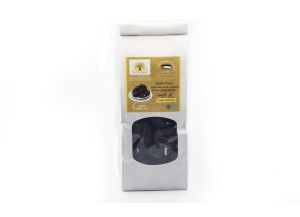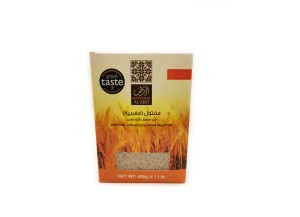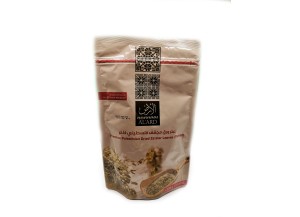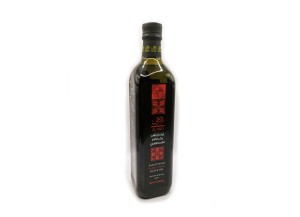Tahini Sesame Seed Paste, (450g/1 pound), Product of Palestine
Tahini Sesame Seed Paste, (450g/1 pound), Product of Palestine
Tahini Sesame Seed Paste, (450g/1 pound), Product of Palestine
Ingredients: Maftoul (Couscous)
Weight: 454 g
Storage: Conserve in a dried place.
What is Tahini?
Tahini is a paste made from sesame seeds that is a staple ingredient in Middle Eastern and Mediterranean cuisines. The main ingredient in tahini is ground sesame seeds, which gives it a distinctive nutty and slightly bitter flavor.
To make tahini paste, sesame seeds are slowly roasted before being ground to a smooth consistency. This process brings out the oils in the sesame seeds, resulting in the rich, creamy texture tahini is known for. Traditionally, tahini is made using a stone mill to grind the seeds, which helps preserve the oils and results in a smoother paste.
In addition to its unique flavor, tahini is prized for its versatility in cooking and baking. It serves as a base for popular Middle Eastern dips like hummus and baba ghanoush. Tahini is also used to make dressings and sauces, or it can be thinned with water and drizzled over falafel, grilled meats, and vegetables. The nutty sesame flavor of tahini enhances both savory and sweet foods.
Tahini's Origins
Tahini has a long history rooted in the cuisines of the Middle East and Mediterranean regions. It's believed to have originated in the ancient Middle East, where sesame seeds have been cultivated for thousands of years. References to sesame seeds have been found in ancient texts from Mesopotamia, Ancient Egypt, and Ancient Greece.
The earliest origins of tahini itself can be traced back to the cuisines of the Levant region and Ancient Persia. Tahini became a foundational ingredient in Middle Eastern and Arabic cuisines, where the paste of ground sesame seeds was used to flavor dishes, sauces, and sweets.
Tahini also became an integral part of Greek and Turkish cuisines throughout the Mediterranean region. In Greece, tahini gained popularity as a meze dip eaten with bread. And in Turkey, tahini is known as tahin and used in various desserts and baked goods.
To make tahini paste, the edible hulls are first removed from the tiny sesame seeds. Then the seeds are dry roasted or lightly toasted to enhance their flavor before being ground into a smooth paste. The roasting brings out the distinctive nutty, earthy flavors of the sesame seeds. This flavorful paste can then be used to add rich, toasted sesame notes to a variety of dishes.
Palestinian Tahini
Tahini is an essential ingredient in Palestinian cuisine. The rich, nutty sesame paste adds flavor and creaminess to many iconic dishes like hummus, baba ghanoush, falafel, and halva.
Palestinian tahini has distinct flavor profiles depending on the region it comes from. Tahini from the West Bank tends to be thicker in texture and have a robust, earthy taste. Gaza-style tahini is lighter in color and flavor. The sesame seeds used also impact the end result - some regions use a mix of white and black sesame seeds.
When you taste authentic Palestinian tahini, the complexity of flavors and velvety texture make it clear why this ingredient is integral to the cuisine. It's far more than just a component - tahini is part of Palestinian culinary identity and heritage.
Nutrition & Health Benefits
Tahini is highly nutritious and packed with healthy fats, protein, and minerals. Just one tablespoon of tahini contains 89 calories, 3 grams of protein, 8 grams of fat, and 1.5 grams of fiber. The majority of the fat in tahini comes from heart-healthy monounsaturated and polyunsaturated fats.
Tahini is an excellent source of copper, manganese, magnesium, iron, and calcium. Copper helps form red blood cells, keeps the immune system healthy, and aids iron absorption. Manganese supports bone health and metabolism. Magnesium is involved in over 300 biochemical reactions in the body and promotes muscle and nerve function. The iron in tahini helps carry oxygen in the blood and prevents anemia. Lastly, the calcium in tahini strengthens bones and teeth.
Research has uncovered many potential health benefits associated with consuming tahini and sesame seeds. The lignans found in sesame seeds may help prevent certain cancers by reducing tumor growth. Tahini’s anti-inflammatory effects can improve arthritis symptoms and reduce the risk of asthma. The healthy fats in tahini may also lower LDL cholesterol levels. Overall, adding tahini to your diet provides a wealth of important nutrients that support good health.
Everyday Uses of Tahini
Tahini is incredibly versatile in the kitchen. Here are some of the most popular ways to use this nutty sesame seed paste on a daily basis:
• Hummus - Tahini is the key ingredient that gives hummus its ultra creamy and smooth texture. Simply blend tahini with chickpeas, lemon juice, garlic and olive oil for classic hummus.
• Baba Ghanoush - For this smoky eggplant dip, tahini is combined with roasted eggplant, garlic, lemon and olive oil. The tahini balances out the richness of the eggplant.
• Falafel Sauce - Drizzle tahini sauce over hot crispy falafel or use it as a sandwich spread. Mix tahini with lemon juice, garlic and herbs for a quick falafel sauce.
• Salad Dressings - Tahini's creaminess makes it perfect for salad dressings. Whisk tahini with lemon juice, garlic, herbs and olive oil for a tangy dressing.
• Sauces & Marinades - Add tahini to sauces and marinades to lend its nutty sesame flavor. It's great in stir fry sauces, yogurt sauces and meat marinades.
• Smoothies - Blend a spoonful of tahini into your morning smoothies. It adds protein, healthy fats and a delicious nutty taste.
• Desserts - Drizzle tahini over fruit, blend it into ice cream, or use it to make no-bake sesame candy bars. It's a unique addition to sweet treats.
With its rich texture and versatility, tahini is an everyday pantry staple that can elevate both savory and sweet recipes. A jar of tahini goes a long way thanks to the many diverse ways it can be used.
Tahini in Baking & Sweets
Tahini's distinctive nutty and mildly bitter flavor profile makes it a versatile ingredient in all types of baked goods and desserts. The sesame seed paste can be used to replace nut butters like almond or peanut butter in cookie, bar, and cake recipes. A few tablespoons of tahini will bring a subtle nuttiness without overwhelming other ingredients.
When added to frostings, fillings, and sweet sauces, tahini introduces a creamy texture and rich taste. It pairs especially well with chocolate, citrus, and warm spices. Try using tahini to make a chocolate frosting with depth, lemon curd with a toasted sesame undertone, or a sweet tahini drizzle for cakes and pastries.
Because it contains healthy fats and proteins, using tahini in baking can boost the nutritional value of treats without compromising on taste. The sesame seed paste contains calcium, iron, magnesium and other important minerals. Replacing some or all of the butter or oil in recipes with tahini can make baked goods more nutrient-dense.
Tahini's versatility makes it easy to incorporate into all kinds of baked goods, from cookies to cakes and everything in between. A small amount of this Middle Eastern pantry staple can bring big flavor payoff to all types of dessert recipes.
Buying and Storing Tips
When buying tahini, be sure to check the label and confirm it's made from 100% sesame seeds. Avoid tahini blends that contain other oils or additives. Check expiration dates and opt for smaller sized containers if you don't use tahini frequently.
Once opened, be sure to store tahini paste in an airtight container in the refrigerator. The oils in tahini can separate and rise to the top during storage. Before using, stir or whisk the paste vigorously to fully incorporate the oil back into the sesame mixture. Properly stored and stirred, tahini paste will keep for several months in the fridge after opening. Smaller containers are ideal for maintaining freshness compared to large buckets or cans.
Refrigeration prevents tahini from spoiling or developing off-flavors. The chilled temperature helps slow the separation of the oils as well. For maximum freshness and flavor, always refrigerate after opening and stir or whisk before each use.
Tahini Recipes
Tahini is incredibly versatile in the kitchen. Here are some delicious ways to use tahini paste:
Tahini Dips and Spreads
• Hummus - The classic chickpea dip gets its signature creaminess from tahini. Blend chickpeas, tahini, lemon juice, garlic and olive oil for perfect hummus.
• Baba Ghanoush - For this popular eggplant dip, roast eggplant until soft, then blend with tahini, lemon juice, garlic and olive oil. Garnish with parsley.
• Tahini Sauce - Blend tahini with lemon juice and water into a creamy sauce for falafel, shawarma or kebabs. Adjust thickness as needed.
Tahini Salad Dressings
• Tahini Lemon Dressing - Whisk tahini, lemon juice, garlic and herbs for a tangy dressing for green salads, grains and veggies. Thin with water to desired consistency.
• Tahini Vinaigrette - Combine tahini, vinegar, mustard, garlic and herbs in a blender for a creamy vinaigrette for leafy greens or grain bowls.
• Tahini Ranch - For a twist on classic ranch, blend tahini, lemon juice, herbs and Greek yogurt for a tangy, nutty dressing.
Baking with Tahini
• Tahini Cookies - Add tahini to cookie dough for chewy, nutty cookies like tahini chocolate chip or sesame thumbprints filled with jam.
• Tahini Halva - Make traditional Middle Eastern halva by cooking sugar syrup and stirring in tahini, then add nuts or dried fruit. Chill and slice.
• Tahini Ice Cream - For nutty ice cream, blend tahini into your favorite base along with flavors like vanilla or honey. Creamy and delicious!
The nutty taste of tahini can elevate both sweet and savory recipes. It's a must-have ingredient for Middle Eastern cuisine.
Your pack shipment
Packages are generally dispatched after receipt of payment and are shipped via SWISSPOST with tracking and drop-off without signature. If you prefer delivery by SWISSPOST Extra with required signature, an additional cost will be applied, so please contact us before choosing this method. Whichever shipment choice you make, we will provide you with a link to track your package online.
Shipping fees include handling and packing fees as well as postage costs. Handling fees are fixed, whereas transport fees vary according to total weight of the shipment. We advise you to group your items in one order. We cannot group two distinct orders placed separately, and shipping fees will apply to each of them. Your package will be dispatched at your own risk, but special care is taken to protect fragile objects.
Boxes are amply sized and your items are well-protected.









